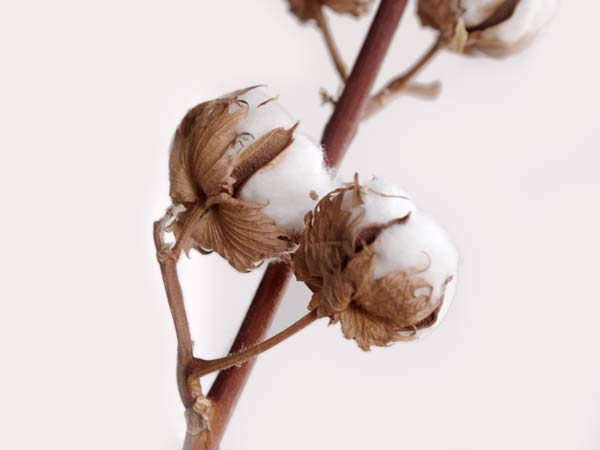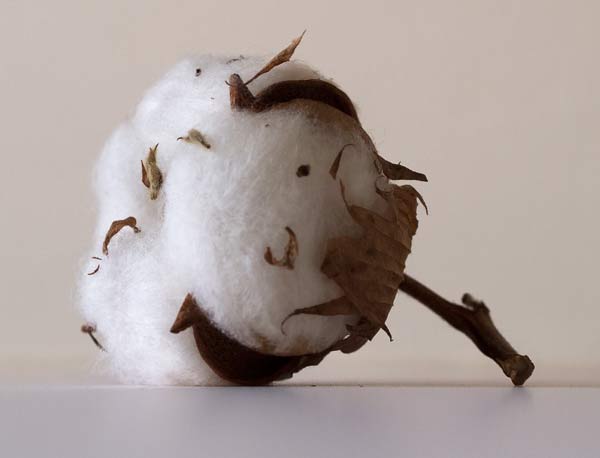
This is a cotton plant and those are cotton bolls growing on the stem.
I was looking for flowers to photograph when I saw this dried cotton plant for sale in a florists here in Edinburgh.
I thought it was a cotton plant but I wasn’t completely sure.
I don’t know why I would think that it was unlikely that a cotton plant would be in an Edinburgh florists… maybe it is because they are more exotic than roses or sunflowers.
On the other hand, if you go into any supermarket there are vegetables from all over the world – so why not cotton in a local florists.
Cotton Bolls
The Dictionary of Etymology says that ‘boll’ is derived from an old Middle Dutch word ‘bolle’ which means ’round object’.
When I was in the Netherlands years ago I remember learning a nonsense rhyme
Olleke bolleke
Rubisolleke
Olleke bolleke
Knol!
If I remember correctly, it is used as a Dutch version of ‘one potato, two potatoes..’ for counting around people in a group and choosing who is going to be ‘it’.
As a Dutch friend tells me, the words have no meaning except for the word bolleke. In the southern provinces of the Netherlands, words ending with ‘ke’ indicate a diminutive… so bolleke would be a little ball.
Whoa Lordie Pick a Bale of Cotton
When I think of cotton, I think of the United States.
I think of slaves, and plantations, and hardship, and of chain gangs and guards on horses, and flat fields of cotton stretching into the distance, and the hot sun.
Leadbelly sang about picking a bale of cotton – Bend down, turn around, pick a bale of cotton…
A bale of cotton weighs 500lbs (225kg) so that would be a lot of little cotton bolls that he’s singing about, especially as it’s ‘pick a bale of cotton a day’.
So he’s singing about people bending over in the hot sun who are required to pick 500lbs of cotton a day.
The way he sings and gets stronger and more fierce brings to mind something quite spectacularly painful and dignified.
And the way he speeds up isn’t for fun… it’s easy to imagine the pain of filling the quota.
I thought the cotton plant would die back and that there would be nothing left at the end of the season. But as you can see, the plant had a woody stem. It’s rough and spiky.
And now that I know that the stems are quite rough and spiky… that’s something else to imagine when I think about slaves picking cotton.
All Around The World
I assumed that cotton was an Old World plant that had been exported to the New World.
In fact it has been cultivated everywhere from India to Mexico for thousands of years.
So it truly is an age-old international plant and an age-old material.
I guess the discovery of spinning and of making cotton clothing developed along similar lines in different parts of the world.
Cotton Staples
Cotton is about 90% cellulose (wood is about 40% cellulose), and cellulose is basically a long chain of glucose units.
The chain can vary from tens of units to several thousand units, and when I teased a cotton boll apart I could see the chain or staple of cotton.
When I pulled a little bit of the cotton boll apart, it separated at about two inches long.
Egyptian cotton has a very long staple, which is what gives it its hard-wearing properties.
Who Eats Cotton
Of course, it is the dreaded boll weevil that eats the cotton plant. It eats the immature bolls and ruins the crop.
We humans can’t eat cotton because we can’t digest cellulose. And the reason we can’t digest cellulose is because we lack the symbiotic bacteria in our gut that produce the enzymes that break down cellulose.
Ruminants with multiple stomachs, like cows, goats, sheep, deer, llamas, giraffes have the enzyme and they can digest cellulose.
So I suppose there is every chance that if a cow or a sheep were let loose in a cotton field, it would chomp merrily on the cotton.
That’s why animals like elephants that can’t get much nutrition out of cellulose have to eat enormous quantities of it.
Horses on the other hand need seeds, grains, tender shoots and plant tips that are higher in starches and protein.
Rabbits aren’t ruminants but they get value out of grasses by eating everything twice (they eat their poo).
Termites can eat cellulose, which is why they are able to eat wooden houses and reduce them to dust.
From Cotton To Explosives To Film
When you mix cotton with nitric acid you get a highly flammable explosive known as gun cotton.
When you mix that with nitroglycerine and petroleum jelly and you get cordite. Both were used as propellants in rifles and heavy guns for many years.
When you mix cotton with camphor you get a flexible material that was used as the film base in photography until the 1940s.
It was known as nitrate film, and it is highly flammable. There were numerous fires in cinemas around the world until nitrate film was replaced with safety film, as cellulose acetate is known.
You may have seen Cinema Paradiso – a classic of Italian cinema – and the scene where all the film in the projection booth catches fire.
Cool In Summer, Warm In Winter
Isn’t that what they say about cotton?
It’s true up to a point. Open weave cotton is pretty good at wicking away moisture, so it will keep you cool in summer. And if the weather is dry and cold and you are not doing much physical exercise, then cotton will keep you warm.
But in cold, wet weather, cotton will chill you to the bone and hang around you like a wet towel because it cannot wick away moisture fast enough.
Cotton-Picking
Have you ever seen a film or read a book where someone says something like ‘Are you out of your cotton-picking mind?’ or ‘Keep your cotton-picking hands to yourself.’
I never made the connection, but of course I see now that it is a derogatory term associated with slavery.
